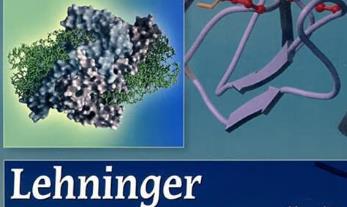- 0.1 Meet The Faculty - Alain Viel
- 0.2 Meet The Faculty - Rachelle Gaudet
- 0.3 The Voices Behind The Camera
- 1.1.1 Course Introduction(1)
- 1.1.2 Course Introduction(2)
- 1.1.3 Course Introduction(3)
- 1.1.4 Course Introduction(4)
- 2.1.1 Protein Structure(1)
- 2.1.2 Protein Structure(2)
- 2.1.3 Protein Structure(3)
- 2.2.1 Protein Folding(1)
- 2.2.2 Protein Folding(2)
- 2.2.3 Protein Folding(3)
- 2.2.4 Protein Folding(4)
- 2.3.1 Enzyme Catalysis(1)
- 2.3.2 Enzyme Catalysis(2)
- 2.3.3 Enzyme Catalysis(3)
- 2.4.1 Enzyme Kinetics(1)
- 2.4.2 Enzyme Kinetics(2)
- 2.4.3 Enzyme Kinetics(3)
- 2.4.4 Enzyme Kinetics(4)
- 2.4.5 Enzyme Kinetics(5)
- 2.5.1 Lipid Structure And Membrane Assembly(1)
- 2.5.2 Lipid Structure And Membrane Assembly(2)
- 2.5.3 Lipid Structure And Membrane Assembly(3)
- 2.5.4 Lipid Structure And Membrane Assembly(4)
- 2.5.5 Lipid Structure And Membrane Assembly(5)
- 2.6.1 Carbohydrate Structure(1)
- 2.6.2 Carbohydrate Structure(2)
- 2.6.3 Carbohydrate Structure(3)
- 2.6.4 Carbohydrate Structure(4)
- Learning PyMOL(1)
- Learning PyMOL(2)
- Learning PyMOL(3)
- Learning PyMOL(4)
- Learning PyMOL(5)
- 3.1.1 Glycolysis(1)
- 3.1.2 Glycolysis(2)
- 3.2.1 Unique Features Of Glycolysis In Red Blood Cells(1)
- 3.2.2 Unique Features Of Glycolysis In Red Blood Cells(2)
- 3.3.1 Bacterial Energetics(1)
- 3.3.2 Bacterial Energetics(2)
- 3.3.3 Bacterial Energetics(3)
- 3.4.1 The Citric Acid Cycle(1)
- 3.4.2 The Citric Acid Cycle(2)
- 3.4.3 The Citric Acid Cycle(3)
- 3.5.1 Electron Transport(1)
- 3.5.2 Electron Transport(2)
- 3.5.3 Electron Transport(3)
- 3.5.4 Electron Transport(4)
- 3.6.1 ATP Synthesis(1)
- 3.6.2 ATP Synthesis(2)
- 3.6.3 ATP Synthesis(3)
- 3.6.4 ATP Synthesis(4)
- 3.7.1 Regulation Of Glycolysis In Lliver Cells(1)
- 3.7.2 Regulation Of Glycolysis In Lliver Cells(2)
- 3.7.3 Regulation Of Glycolysis In Lliver Cells(3)
- 3.7.4 Regulation Of Glycolysis In Lliver Cells(4)
- 3.8.1 Regulation Of Blood Sugar By The Liver(1)
- 3.8.2 Regulation Of Blood Sugar By The Liver(2)
- 3.8.3 Regulation Of Blood Sugar By The Liver(3)
- 3.8.4 Regulation Of Blood Sugar By The Liver(4)
- 4.1.1 Liver Metabolism(1)
- 4.1.2 Liver Metabolism(2)
- 4.1.3 Liver Metabolism(3)
- 4.2.1 Muscle Metabolism(1)
- 4.2.2 Muscle Metabolism(2)
- 4.3.1 Brain Metabolism(1)
- 4.3.2 Brain Metabolism(2)
- 4.3.3 Brain Metabolism(3)
- 5.1.1 Nucleic Acids(1)
- 5.1.2 Nucleic Acids(2)
- 5.1.3 Nucleic Acids(3)
- 5.1.4 Nucleic Acids(4)
- 5.2.1 Carbohydrate Metabolism(1)
- 5.2.2 Carbohydrate Metabolism(2)
- 5.3.1 Fatty Acid Metabolism(1)
- 5.3.2 Fatty Acid Metabolism(2)
- 5.3.3 Fatty Acid Metabolism(3)
- 5.3.4 Fatty Acid Metabolism(4)
- 5.3.5 Fatty Acid Metabolism(5)
Biochemistry Principles
I. Introduction to Biochemistry A. Definition and scope of biochemistry B. Importance of biochemistry in biological systems
II. Biomolecules A. Carbohydrates 1. Structure and function 2. Monosaccharides, disaccharides, and polysaccharides 3. Glycosidic linkages B. Lipids 1. Structure and function 2. Fatty acids, triglycerides, phospholipids, and steroids 3. Saturated and unsaturated fats C. Proteins 1. Structure and function 2. Amino acids and peptide bonds 3. Protein folding and denaturation D. Nucleic acids 1. Structure and function 2. DNA and RNA 3. Nucleotide structure and base pairing
III. Enzymes A. Definition and properties B. Enzyme kinetics 1. Michaelis-Menten equation 2. Enzyme-substrate complex formation 3. Factors affecting enzyme activity C. Regulation of enzyme activity 1. Allosteric regulation 2. Covalent modification 3. Feedback inhibition
IV. Metabolism A. Overview of metabolic pathways B. Glycolysis 1. Steps and regulation 2. ATP production and fate of pyruvate C. Citric acid cycle 1. Steps and regulation 2. ATP production and carbon dioxide release D. Oxidative phosphorylation 1. Electron transport chain 2. ATP synthesis E. Metabolism of lipids and proteins 1. Beta-oxidation of fatty acids 2. Protein catabolism and amino acid metabolism
V. Biochemical Techniques A. Spectroscopy 1. UV-visible spectroscopy 2. Infrared spectroscopy B. Chromatography 1. Thin layer chromatography 2. High-performance liquid chromatography C. Electrophoresis 1. Polyacrylamide gel electrophoresis 2. SDS-PAGE D. Mass spectrometry 1. Ionization techniques 2. Mass analyzers
VI. Biochemical Applications A. Medical biochemistry 1. Clinical diagnostics 2. Drug discovery and development B. Agricultural biochemistry 1. Crop improvement 2. Pest control C. Industrial biochemistry 1. Bioremediation 2. Biofuels production
VII. Ethical Considerations in Biochemistry A. Genetic engineering and biotechnology B. Use of animals in research C. Human experimentation
Note: This is a general outline for a biochemistry course. The specific content and depth of each topic may vary depending on the institution and level of the course.
全站精品课程推荐!
The most popular courses












